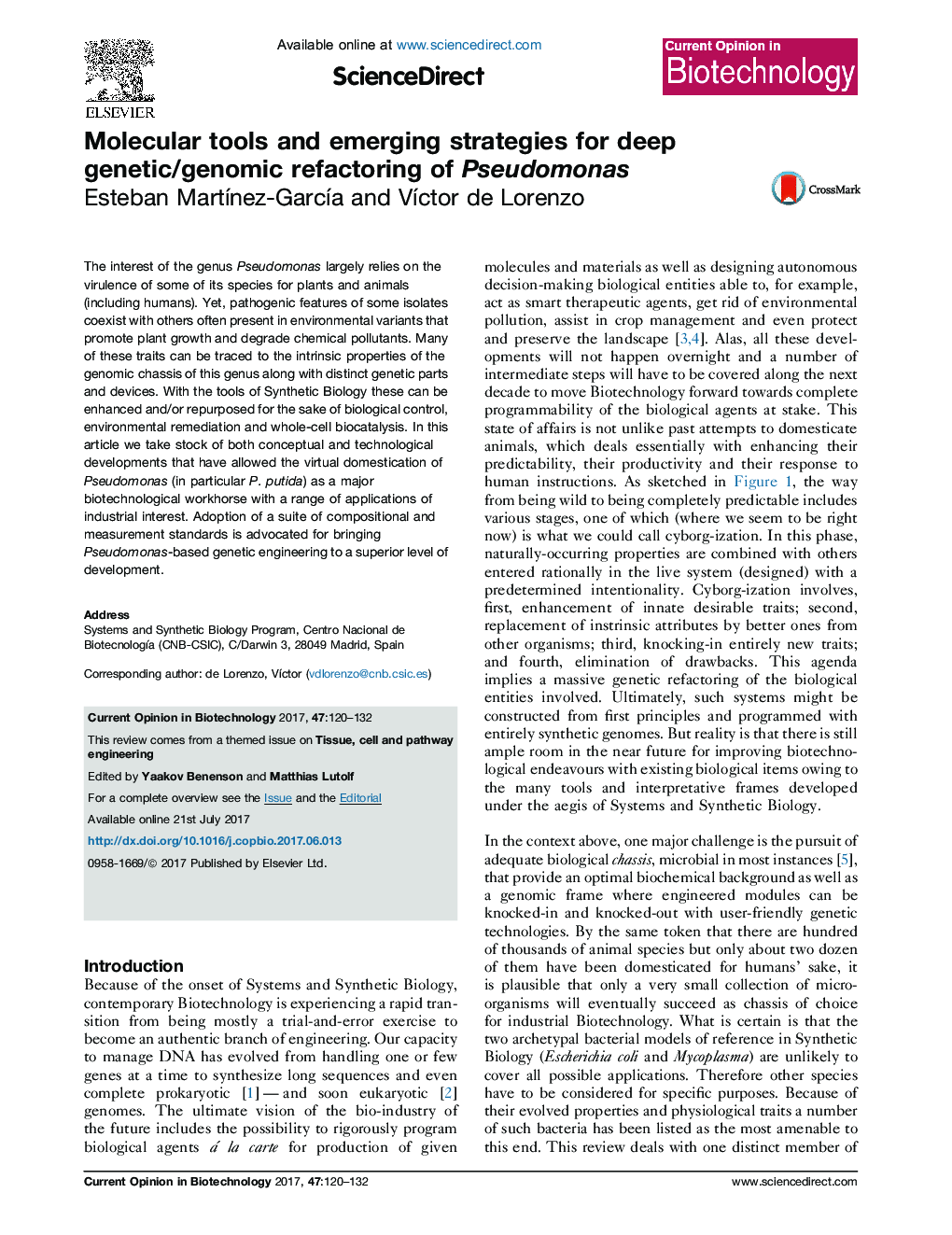| Article ID | Journal | Published Year | Pages | File Type |
|---|---|---|---|---|
| 6451433 | Current Opinion in Biotechnology | 2017 | 13 Pages |
â¢Pseudomonas species are well suited as a platform for industrial and environmental biotechnology.â¢A range of Synthetic Biology methods for genetic refactoring of Pseudomonas has been developed.â¢The Pseudomonas toolbox includes plasmid and transposon vectors, expression systems and recombineering methods.â¢Reliable genomic design of Pseudomonas strains still needs an effort to standardize tools and measurements.
The interest of the genus Pseudomonas largely relies on the virulence of some of its species for plants and animals (including humans). Yet, pathogenic features of some isolates coexist with others often present in environmental variants that promote plant growth and degrade chemical pollutants. Many of these traits can be traced to the intrinsic properties of the genomic chassis of this genus along with distinct genetic parts and devices. With the tools of Synthetic Biology these can be enhanced and/or repurposed for the sake of biological control, environmental remediation and whole-cell biocatalysis. In this article we take stock of both conceptual and technological developments that have allowed the virtual domestication of Pseudomonas (in particular P. putida) as a major biotechnological workhorse with a range of applications of industrial interest. Adoption of a suite of compositional and measurement standards is advocated for bringing Pseudomonas-based genetic engineering to a superior level of development.
Graphical abstractModularization of different functional segments in plasmid vectors eases creation of genetic tools á la carte for Pseudomonas.
